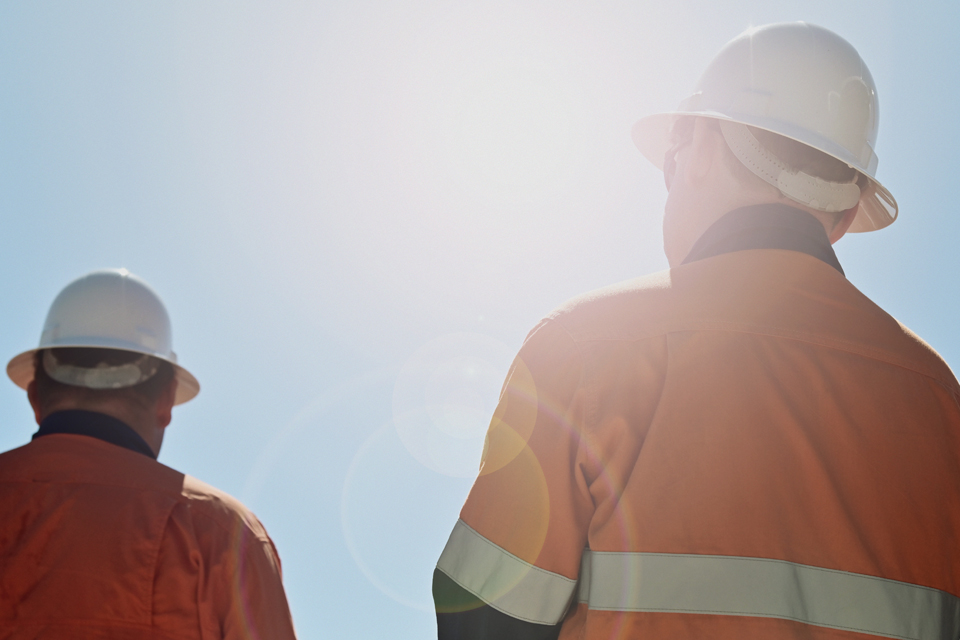
Holiday Bonus Episode: Safety Tips You Need This Season | Risk Matrix Episode 122
THE RISK MATRIX Cutting-edge podcast on occupational safety and risk management. Hosted by industry titans: JAMES JUNKIN, MS, CSP, MSP,…

Heat stress monitor and surveillance technology advancements have led to the development of innovative monitoring techniques and tools that enhance our ability to detect and manage heat stress. However, not all safety teams are aware of or leverage their full capabilities.
This article discusses advances in the heat stress monitor and highlights its applications, benefits, and implications for human health and performance.
One of the notable advances in heat stress monitoring is the development of wearable sensors that can accurately measure key physiological indicators, such as body temperature, heart rate, and hydration levels.
These sensors often integrate into clothing or are worn as discrete accessories. Modern wearable devices equipped with temperature and humidity sensors supply real-time data to users and, in some cases, to centralized systems through the Internet of Things (IoT). This enables individuals and organizations to watch heat stress levels continuously and remotely, allowing for timely intervention.
Wearable sensors offer several benefits, including the following:
Advancements in data analytics and machine learning have revolutionized heat stress monitoring. Companies can predict heat stress risks and recommend preventive strategies by analyzing large datasets from various sources, including:
Furthermore, machine learning algorithms can learn from historical data and identify patterns that might go unnoticed by human observation alone.
For instance, a machine learning model could analyze a construction worker’s physiological data, work schedule, and environmental conditions to predict the likelihood of heat-related illnesses. This proactive approach empowers individuals and organizations to make informed decisions and implement strategies that minimize heat stress risks.
Thermal imaging and remote sensing technologies have expanded the horizons of heat stress monitoring beyond individual wearers. Drones, satellites, and ground-based sensors equipped with thermal cameras can capture temperature variations in large areas, providing insights into localized heat stress conditions. These areas include the following:
Thermal imaging can find “hot spots” with elevated heat stress risks. For instance, thermal cameras can recognize runners struggling with heat stress during a marathon, enabling medical teams to offer timely aid. Additionally, agricultural managers can use thermal imagery to optimize irrigation and shading strategies, reducing heat stress in crops and livestock.
Effective heat stress monitoring goes beyond tracking individual physiological parameters; it must also consider the environment in which individuals work. It does this by providing a comprehensive understanding of heat stress conditions by integrating specific environmental data, such as:
Advanced monitoring systems can combine these environmental factors with physiological data to calculate heat stress indices like the Wet Bulb Globe Temperature (WBGT) index.
Considering physiological responses and environmental conditions, these integrated approaches offer a more accurate assessment of heat stress risks. This enables better-informed decision-making, such as adjusting work schedules, providing rest breaks, or implementing engineering controls to mitigate heat stress.
Mobile applications play a crucial role in heat stress monitoring by delivering personalized information and recommendations to users. These apps often integrate with wearable sensors, allowing individuals to track their physiological data and receive real-time alerts. They can also offer educational content about heat stress prevention and first aid.
User engagement is a critical factor in the success of heat stress monitoring programs. By making the information accessible, understandable, and actionable, mobile apps empower users to take ownership of their health and safety. Some apps even incorporate gamification elements to encourage healthy behaviors and promote heat stress awareness.
While these advances in the heat stress monitor are promising, challenges remain. Ensuring the accuracy and reliability of sensors, addressing privacy concerns related to data collection, and bridging the digital divide are essential considerations. Additionally, interdisciplinary collaboration among researchers, engineers, healthcare professionals, and policymakers is critical to fully harness these technologies’ potential.
Advances in heat stress monitoring have transformed our ability to safeguard human health and performance in the face of rising temperatures. Wearable sensors, data analytics, thermal imaging, and user-engaging apps offer comprehensive insights into heat stress risks, enabling proactive interventions and informed decision-making.
As these technologies evolve, their integration into various sectors will enhance our capacity to combat heat stress, mitigate its impact, and build more resilient and adaptive societies.
Veriforce’s experts will continue to deliver the latest information on technological advancements that will help keep your workforce safe.
Contact us today to learn more.
James A. Junkin, MS, CSP, SMS, ASP, CSHO is the chief executive officer of Mariner-Gulf Consulting & Services, LLC and the chair of the Veriforce Strategic Advisory Board. He is Columbia Southern University’s 2022 Safety Professional of the Year (Runner Up) and a much sought after master trainer, keynote speaker, podcaster, and author of numerous articles concerning occupational safety and health.


THE RISK MATRIX Cutting-edge podcast on occupational safety and risk management. Hosted by industry titans: JAMES JUNKIN, MS, CSP, MSP,…

THE RISK MATRIX Cutting-edge podcast on occupational safety and risk management. Hosted by industry titans: JAMES JUNKIN, MS, CSP, MSP,…
We’ll send you practical and insightful supply chain risk management info that can benefit your business. Plus, important company updates that keep you in the loop.
